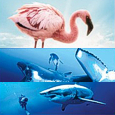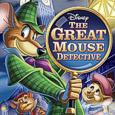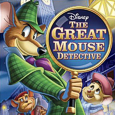Disneynature Films (2010), Walt Disney Home Entertainment (October 19 2010)
Oceans: 1 BD + 1 DVD, 84 mins plus supplements, 1080p high definition 2.40:1, DTS-HD and 5.1 Dolby Digital, Rated G, Retail: $39.99
Crimson Wing: 1 BD + 1 DVD, 78 mins plus supplements, 1080p high definition 1.85:1, DTS-HD and 5.1 Dolby Digital, Rated G, Retail: $39.99
Oceans and Crimson Wing each sold separately.
Storyboard:
After Earth, Disneynature returns to the wild, to explore life under the waves and discover the mystery of the flamingos.

The Sweatbox Review:
The “March Of The Animals” continues in the Walt Disney Studios’ second and third entries in their new series of True Life Adventures styled wildlife films, although once again, as with the debut picture Earth a couple of years ago, not everything is as brand new as it suggests. The original True Life films were groundbreakers, of course, with Walt launching the original series at a time when his distributors RKO were adamantly against releasing such footage to theaters. Walt, frustrated with the lack of support, did what he always did: he went out on his own, founding the Buena Vista Pictures Distribution Co. in order to get the first of his animal films, Seal Island, onto screens in 1948.
Walt was proved right, as happened so often during his career: Seal Island became greatly popular with audiences and went on to pick up awards for Best Short Subject at the Academy Awards and the Cannes Film Festival. What Walt brought to nature filmmaking was his usual stamp of showmanship, turning what could often come over as fascinating but dull footage into factual entertainment, also injecting higher values in adding color and budgets that allowed the cinematographers the time they needed to sit out for weeks and sometimes months in order to get the footage they needed to tell an actual “scripted” story.
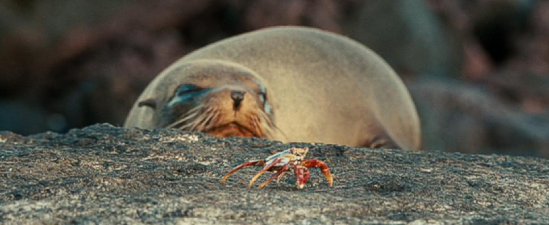
Not that the animals were manipulated in any way to get them to “perform”, but Walt wasn’t adverse to taking the odd liberty with the footage, adding narration, music and sound effects to shape the scenes so as to feel as if we were following a particular creature in their habitat, even if they became characters with story arcs in any given production. The True Life Adventures quickly became the bar against which other natural filmmakers were measured, and were a source of inspiration to many: later “master of disaster” Irwin Allen entered the genre in 1953 with the one hour The Sea Around Us (just out in the Warner Archive series), the same year in which Walt swapped the two-reeler approach for features too, with the still amazing The Vanishing Prairie.
Television was perhaps a more natural home for these films, and its arrival signified the end of the original Adventures, which changed tact to become the True Life Fantasies, where the same high level of nature footage could be supplemented with more and more controlled filming in order to create story-driven animal films. On the small screen, the work of now Sir David Attenborough and the BBC Natural History Unit was second to none. With an obvious enthusiasm not only for the creatures but for the resulting material as well, Attenborough has continued to brake new ground since the 1950s, particularly with such series as Life On Earth, The Living Planet and The Trials Of Life.
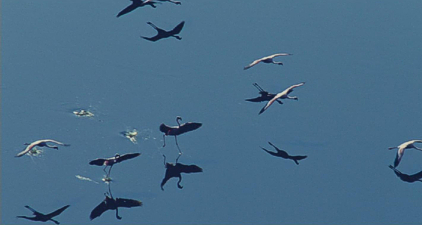
Disney Studios returned to their original wildlife archives one last time for the 1975 compilation The Best Of Walt Disney’s True Life Adventures, and kept those original films running sporadically on TV for years afterwards. At the turn of the millennium, a short run of Disney’s New True Life Adventures all but came and went without much fanfare or recognition, the work of Attenborough and the BBC clearly being the crews at the forefront of these efforts, with his films taking on new depths with the arrival of high definition, and in his retiring years he has seen a new generation of observers pick up the baton and run with it, producing such recent wonders as The Blue Planet and Planet Earth.
The enormous success of Warner Brothers’ feature film documentary The March Of The Penguins can not be underestimated also, and the Studio that was once home to animals all over the world was caught off guard. The result was the announcement of the still infant Disneynature division, announced to release one feature length wildlife film annually each Earth Day, that environmentally friendly early date on the calendar. That debut Earth film, fascinating as it was, provided heaps of déjà vu for those that had already seen Attenborough’s Planet Earth: in an attempt to get the Disneynature brand rolling, the Studio licensed its footage from a European theatrical cut of Earth, re-voiced it from Patrick Stewart to James Earl Jones’ narration, and Disneyfied it so that the fates of some of the animals depicted wasn’t quite as naturalistic as it might have been.
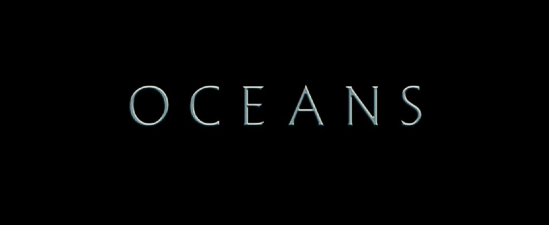
In Oceans, the same trick is played again, taking directors Jacques Perrin and Jacques Cluzaud’s original 104 minute French documentary Océans, removing 20 minutes of the more realistic and unpleasant aspects including extended scenes of environmental disasters, and Disneyfying the end result so that it plays much more as a safe and even warm paean to the five major areas of water on our planet. The result, not to go for the obvious pun even if it’s true, is wet, not least because of new voiceover Pierce Brosnan’s insanely slow and inane narration that sinks the movie minutes in. Even at a cut-down 84 minutes, Oceans feels long. Very long.
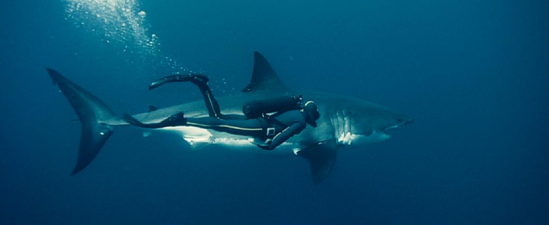
Perhaps the knowledgeable and factually rich dialogue of Attenborough’s creations have spoiled us over the years, but here there’s almost nothing to learn about what we’re seeing on screen. And what we do see is amazing: simply perfect underwater cinematography – fours years in the making – that will have you wondering if any CGI was utilized in some of its unbelievable shots. The masses of dolphins playing with a school of fish, the bullet-diving seagulls hitting the water to grab their food, the majesty of the humpback whales, the magic of night-time under the seas, the immense numbers of battling crabs, the sheer awesome power of the water as various craft sail through the crashing waves and, inevitably, frolicking penguins…all filmed impressively up close in a variety of shots above and below the surface, but then cutting away to something else like a stream of consciousness without much structure to anything.
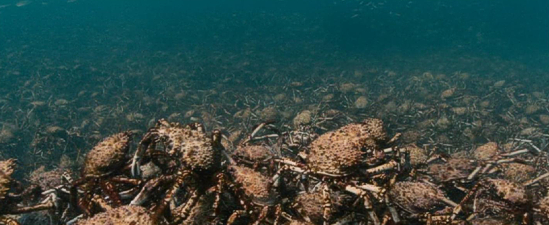
And then there’s Brosnan, leaning on his calm Irish lilt even more than usual, to waffle on as if the writers had swallowed a poetry book and we are the unfortunate ones that have to listen to the result. “In the beating of a newborn heart, a world begins”, “in a pulse of water and a splash of sunlight and color” he pretentiously flimflams, “as the moonlight dances on the waves”, while the audience rolls its eyes. There’s also a nonsensical wandering off on tangents, one about explorers discovering the new world, ignorant of the amazing wonders below their ships or, as the narration has it, “As the wind rippled through their sails overhead, how could they imagine the unseen silk scarves rippling through the water below?” in relation to the blanket octopus elegantly gliding onscreen.
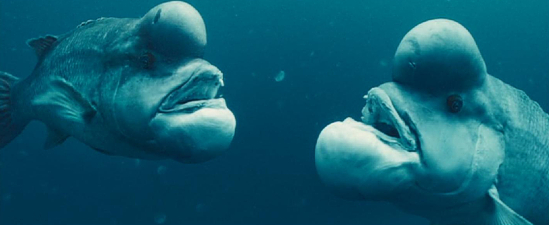
This reliance on empty, flowering dialogue means we don’t learn anything of worth, so the film resorts to long stretches where the sea life gets on with what it does, looking fantastical, but often like a really expensive screensaver. If nothing else, Oceans works great as a cure for insomnia: the slo-mo, wafting images accompanied by Brosnan’s s-l-o-w and languid delivery (you just want him to get on with it!) providing the perfect way to send someone off to sleep. The Disney nature films of old, and Attenborough’s recent work, shows that there’s nothing like using the material to tell a story, using the animals as characters to create some drama and interest. But, with a total lack of that here, I’m afraid Oceans simply drifts along without direction, often in danger of floating up its own pompous backside.

At least The Crimson Wing: Mystery Of The Flamingos fares a little better in these regards, moving from France for its source material to UK filmmakers for what looks to be Disneynature’s first film produced from the outset as opposed to being later picked up and re-versioned. Here, the narrator is the local English television host Mariella Frostrup (apparently one time brief squeeze of George Clooney), not a “name” immediately associated with nature films, though her voice suits them much more than I’d first imagined and at least here she’s served with a more factual script, forgoing Oceans’ closing appeal to respect the waters and unfathomably deep lines such as “Instead of asking what exactly is the ocean, maybe we should be asking, who exactly are we?”
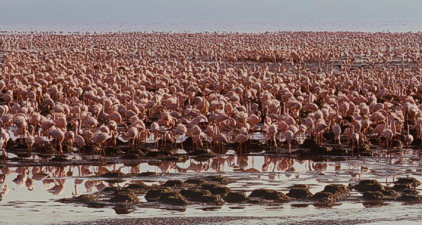
In bypassing such inanities of that film for some good information, the film’s second saving grace is that it does indeed revert to an animal-led story format, following a young chick throughout its life in the northern Tanzanian location of the desolated Lake Natron. Once a thriving lake, Natron has now dried up, and conditions there are bleak and harsh to say the least. Crimson Wing does an remarkable job of documenting life here, taking in the creation of life, admirably not shying away from tackling the harsh facts of death, though being clear to reassure the audience with a happy ending rebirth, which again doesn’t take into account children’s very apt ability to accept and understand more mature themes, even if there are one or two heartbreaking scenes.

In fact, the entire film seems to be on the fence as to whether it’s an adult general interest documentary or a family film: certainly the excellent, Thomas Newman-esque music score, which by turns has several intentionally amusing cues scored to give the flamingos character (I was reminded, often, of Eric Goldberg’s Carnival Of The Animals sequence in Fantasia 2000, and there’s also a recurring feather motif that recalls Forrest Gump) suggests that this is to be taken light-heartedly, but then the non-too hyper editing that nicely lets moments play out naturally and the influx of facts – not least text heavy front and end information cards – may lead to some instances that younger people just won’t be able to take in without good use of the pause, rewind or fast-forward buttons.
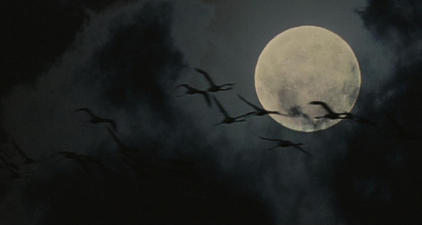
But The Crimson Wing is certainly a better film than its 2010 release companion Oceans, even if neither of them quite reach the levels that Earth did previously by way of Attenborough’s original series. However, it could actually be the best of the bunch of these Disneynature versions, and I’m glad to see that this new wildlife series hasn’t been jettisoned by the Studio as quickly as it was announced: a fourth film, African Cats, looks set to debut next year and if there’s anything that should really hold some dramatic interest and the potential for a thrilling natural wildlife film, it has to be those big felines, which I personally love to look at and find transfixing.
I do hope that endeavor further brings back some of what made the True Life Adventures compelling adventures as much as they were documentaries. Those films, and especially Attenborough’s follow-ups, always made a point of explaining things in layman’s terms, something Oceans does away with but that Crimson Wing manages, if only just. Obviously these films are more about the visuals than any sound achievements, and in both cases they deliver stunningly, but then there is the need to understand what you’re looking at, however awe inspiring or – again for a film bearing the Disney name – high the cute factor is: a young chick finding its feet is one of the most adorable things I’ve ever seen.
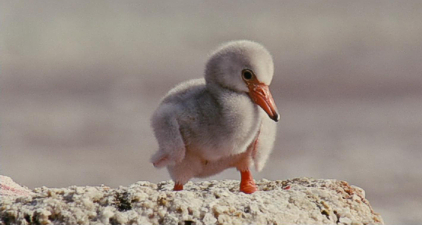
Oceans is more like Earth before it, providing a “sampling” of underwater life rather than an in-depth exploration, and using the opportunity to remind us that this life is diminishing thanks to the environmental climate, even if this aspect isn’t overtly labored over every five minutes. The Crimson Wing does better in finding a theme and sticking with it, coming over as a much more entertaining “March Of The Flamingos” style picture in the end, but at the moment Disneynature still seams to be treading water and competing with others when I think I’d like to see them discovering something of a more unique identity to carry this otherwise still very welcome series forward.
Is This Thing Loaded?
Taking Earth’s lead in how to put a Disneynature package together, both Oceans and Crimson Wing provide a selection of supplements that open up the world of the filmmakers and how they achieved the many wondrous sights and shots in their films. Both titles have been in Blu-ray and DVD Combo Packs, under review here, each containing the stunning photography in hi-def as well as handy standard definition DVDs, though no Digital Copies are included. The Disney regular Sneak Peeks feature as usual, the notable ones featured through both sets being for other Disneynature titles, including the next theatrical release African Cats, A Christmas Carol, Tangled and Disney’s environmental initiative Friends For Change.
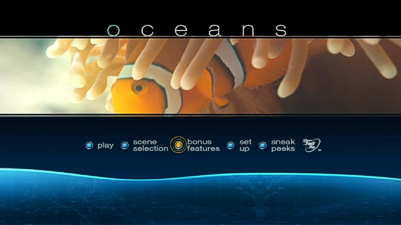
The Oceans Blu-ray Disc the first thing you’ll come across are the “fully interactive” Living Menus, a variation on the same kinds of tricks that the Studio’s Diamond Editions have played whenever you insert the disc. Picking up its cues from the internet, your connected player will freak you out on those discs, with the host bidding you good morning, or good evening, and even commentating on the weather conditions – pretty cool stuff. Here it’s been amended so that the viewer can select any (pre-determined) region on the globe and find out more about that area via text statistics and video clips. Nine regions will be available each month, each telling us something new timed to the seasons and differences they bring. Very snazzy, and it works, too!
What looks to be a Disneynature standard feature, exclusive to the BDs, is a Filmmakers Annotation onscreen trivia and picture-in-picture video track, a mixture of comments from the filmmakers, crew and experts not particularly connected to the film but clearly knowledgeable and authoritative on their subjects. Very welcome, this runs the length of the feature and, in fact, given the dawdling speed of the soundtrack’s narration, you might find it more interesting to switch this feature on through the film, as it’s infinitely much more informative about what we’re seeing onscreen as well as how the scenes were achieved. I wasn’t originally able to access Earth’s text trivia track, but this is a step up, like Disney’s Cine-Explore features, but absolutely packed with the kind of information the actual film is woefully short on.
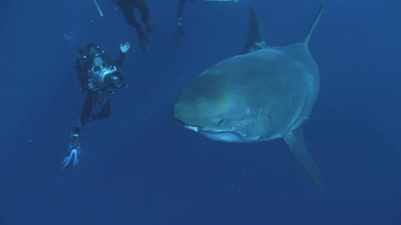
Disney And Nature: Caring For The World We Share takes a brief look back on Walt’s appreciation for the environment and the True Life Adventures, touching on how the new Disneynature films and the Disney Worldwide Conservation Fund are working to continue the company’s connection to nature through contributions to various projects around the world, although once again the narrator seems to have come from the hippy-drippy casting camp, annoyingly dreamy when something more straightforward and solid would pass the message on so much more succinctly rather than sounding like a doped-out mother nature. This eight-minute promo may be a little pat on the back self congratulatory, but fair play to them wanting to push their good work.
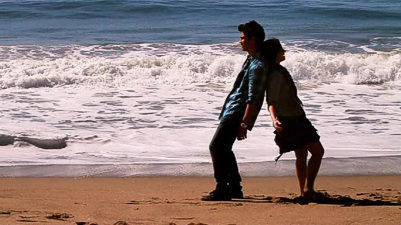
Sprinkling their Disney Channel “magic” on the end credits of Oceans are Joe Jonas and Demi Lovato’s Make A Wave (geddit?) track, typically slick and sounding like a million other studio produced songs nowadays. It’s inoffensive enough, though its inclusion here as a Friends For Change music video feels more like Oceans promotional material than a straight music video or an item with an environmental edge, what with Joe and Demi frolicking around on a beach, next to the ocean, right!? Genius, though that iTunes proceeds go to Disney’s Worldwide Conservation Fund means at least some good comes of this!
The standard definition DVD includes the Conservation featurette and music video, as well as Deeper In The Ocean, which offers up five clips from the video commentary that dive behind the scenes, running around ten minutes in a Play All option. None of them provide terribly in-depth analysis on the film as a whole, but there are some decent nuggets of information to be found in these brief crew interviews that deal with several specific aspects: The Importance Of The Ocean, The Sardine Run, Activity In The Coral Reefs, “Jonas” The Torpedo Camera, and Swimming With Great White Sharks.
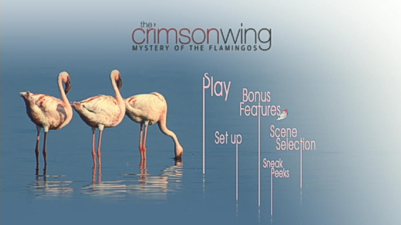
On the The Crimson Wing: Mystery Of The Flamingos Blu-ray Disc, the Living Planet interactive feature works in much the same way as Oceans’s living menus, basically being the same feature but given a more generic Disneynature look so that it can presumably be featured on upcoming titles in the future. Again, these are updated each month to feature different regions and information, and a smart thing is that this isn’t just the same globe offered as on the Oceans disc, meaning that we get to select different regions from each disc, which makes it feel more unique.
Disneynature’s Filmmakers Annotations trivia and picture-in-picture video commentary again features remarks from the producers, directors, camera operators and other crew involved in the making of The Crimson Wing, for another exemplary exploration of the production. This is once again a track well worth visiting for anyone interested in wildlife filmmaking, and it’s better in some ways to the Oceans track for being much more focused on the filming itself, with a huge number of stories about how certain moments were captured mixed in with interviews and behind the scenes footage. Once again, this is just an excellent way to look into any film’s making, but that so much of it relied on waiting out for the perfect shot only plays up the dedication of the crew even more.
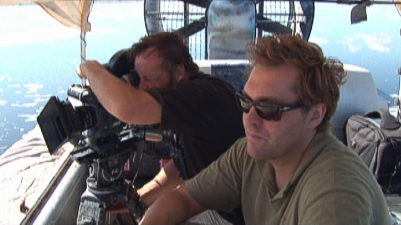
Also extremely interesting are the Lake Natron Diaries: Behind The Crimson Wing, a series of featurettes that stay on the other side of the camera at how the filmmakers managed to achieve some of the remarkable shots in the film. Life At The Camp, Life Of The Flamingo, a Making Of, more on the Lake Natron area, and the approach on the Music by the composers are all covered, making a fascinating 20 minutes when selected in a Play All configuration. The only minor strikes against these are that they repeat a little material from the video commentary and that these clips are only presented in SD letterboxed format (understandable on the enclosed DVD, of which this is the only bonus repeated).
There’s no nauseating music video this time out on Crimson Wing, but there is a five minute montage of Lake Natron scenes edited to some of the enchanting music score that is presented as a Crimson Wing Screensaver. The shots, as you would expect, are staggering and look great in HD, the warmly recorded score sounding just as nice, though I found it ironic that it was this film that warranted the screensaver when it was Oceans that pretty much does the same thing by itself in just running the movie! Here the Thomas Newman-esque music is showcased and given free reign to play over silent moments of life at Lake Natron, the montage repeating on a loop until the menu is selected again, providing a way for the filmmakers to say thanks to the composers’ efforts in a very nice little way.
Case Study:
Following in Earth’s elephant-sized footsteps, it’s nice to see Oceans and Crimson Wing getting the same treatment in their BD and DVD Combo packs, including the shiny slipcovers that follow the same Disneynature design. These slips largely replicate the cover art found on the sleeve underneath but for a few cosmetic alterations, the disc art being a mix of color (for the BD) and simple gray (for the DVD), as is the Disney standard. Inserts promote both upcoming titles and environmental issues, in keeping with Disneynature’s general ethics, and the Movie Rewards code.
Ink And Paint:

Whatever one may level at Brosnan’s dry narration, Oceans looks fantastic, the result of a four year shoot that went back time and time again to gain the perfect shots. Presented in 2.40:1 on both the BD and DVD, this is glorious screen wallpaper at its best, even if, although you’d assume the super-widescreen photography would suit the wide expansiveness of the ocean, the ratio can sometimes make the sea life seem distant (something that seems to be in relation to the rest of the film’s tendencies).
Likewise The Crimson Wing features sights never seen before (it was shot in locations even Attenborough and his crews have never ventured), as usual captured with painstaking commitment from the filmmakers. The narrower 1.85:1 framing allows us to get a little nearer to the birds, and the tricks used in order for the cameras to film so close mean that we can really feel we’re there as chicks hatch. The angles are inventive as well: sometimes it was as if the “cast” were lined up just where the directors wanted them!
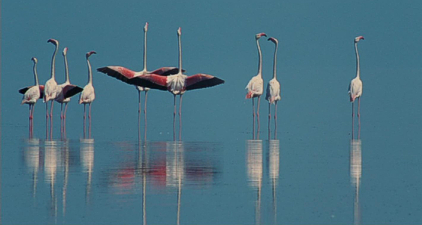
Scratch Tracks:
It’s not, ultimately, fair to blame the boring narration of Oceans on Brosnan: about half-way through I wondered if the original French language track was providing more energy or information, so I did a swap over. Nope, it’s just as laboriously delivered and info-free as the English track, as is the also included Spanish mix, so it’s obviously a filmmakers’ decision to go for a dreamy approach that ultimately sinks their film.
As mentioned above, The Crimson Wing has more fun with its soundtrack by way of The Cinematic Orchestra’s fun and involving music score, which gives great character to the animals onscreen. Frostrup’s narration is as equally basic as Brosnan’s, but at least there’s more explanation to accompany the plot. That said, however, both films are somewhat livened up by running them slightly faster than real-time, which at least gives the voices a boost.
English, French and Spanish dubs and subs are included on both titles, with Portuguese, Italian and Dutch also available on The Crimson Wing.
Final Cut:
It’s once again great to see Disney continuing to rediscover its roots by way of bringing back the big-screen nature documentary. Not only does this move back into wildlife filmmaking provide another avenue for the Studio to stretch out, but it simultaneously juices up some company synergy with the Animal Kingdom theme park in Orlando while bringing something new to screens in keeping with their animal film heritage. Oceans doesn’t make the splash it should do thanks to a waterlogged script, even if its visuals are striking, but Crimson Wing provides much more colorful lustre in returning to a story format. The brand needs to find more of its own voice, but I still think the Disney name can bring something unique to the genre, and I look forward to next year’s African Cats and further trips into the unexplored parts of our world.
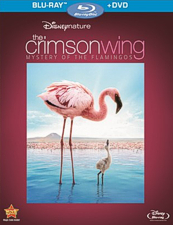 | ||
 |



